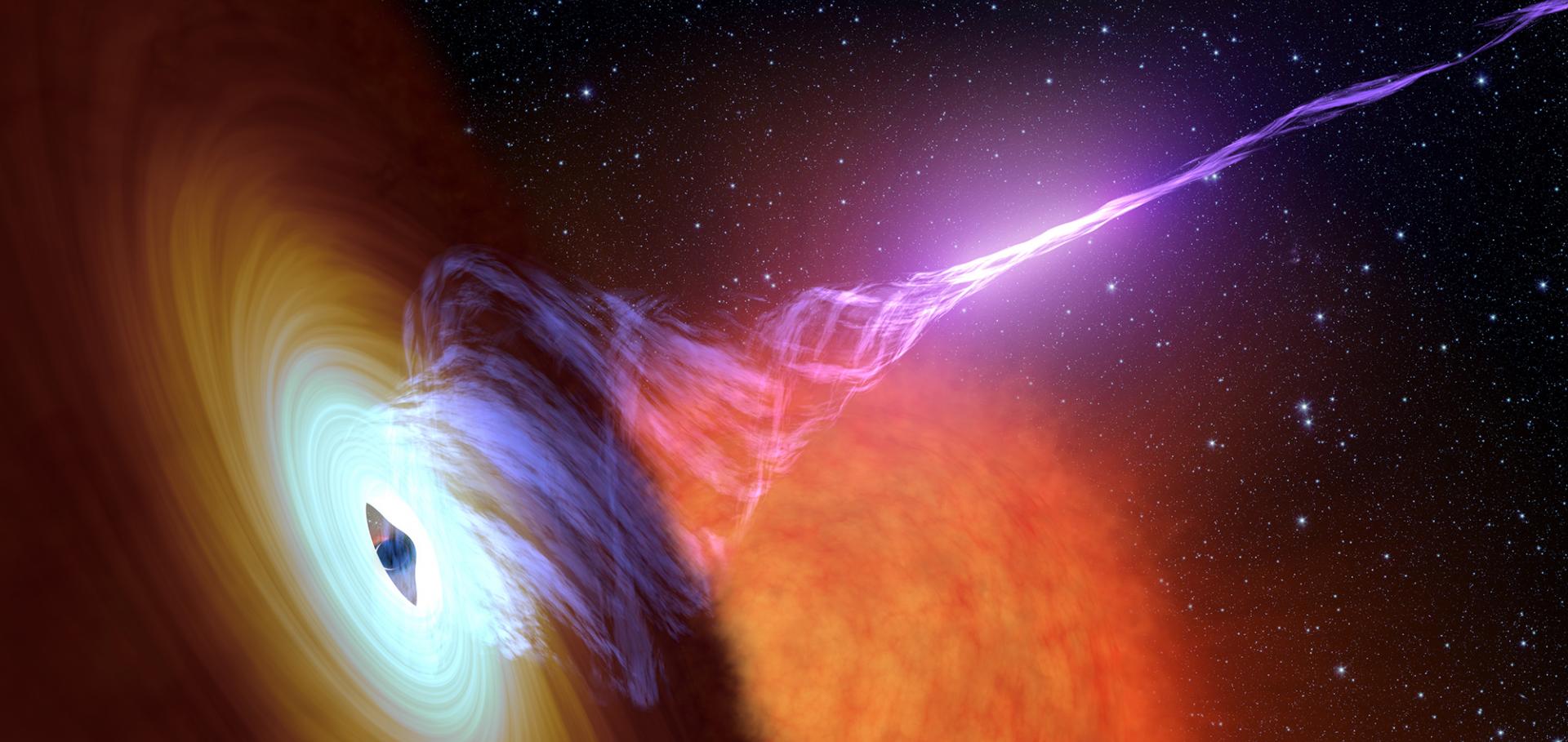Powerful jets from accreting black holes: Evidence from the optical and infrared
Chapter in Black Holes and Galaxy Formation, (2010) 295-320
Abstract:
A common consequence of accretion onto black holes is the formation of powerful, relativistic jets that escape the system. In the case of supermassive black holes at the centres of galaxies this has been known for decades, but for stellar-mass black holes residing within galaxies like our own, it has taken recent advances to arrive at this conclusion. Here, a review is given of the evidence that supports the existence of jets from accreting stellar-mass black holes, from observations made at optical and infrared wavelengths. In particular it is found that on occasion, jets can dominate the emission of these systems at these wavelengths. In addition, the interactions between the jets and the surrounding matter produce optical and infrared emission on large scales via thermal and non-thermal processes. The evidence, implications and applications in the context of jet physics are discussed. It is shown that many properties of the jets can be constrained from these studies, including the total kinetic power they contain. The main conclusion is that like the supermassive black holes, the jet kinetic power of accreting stellar-mass black holes is sometimes comparable to their bolometric radiative luminosity. Future studies can test ubiquities in jet properties between objects, and attempt to unify the properties of jets from all observable accreting black holes, i.e. of all masses.Probing the behaviour of the X-ray binary Cygnus X-3 with very long baseline radio interferometry
Monthly Notices of the Royal Astronomical Society 401:2 (2010) 890-900
Abstract:
In order to test the recently proposed classification of the radio/X-ray states of the X-ray binary Cygnus X-3 (Cyg X-3), we present an analysis of the radio data available for the system at much higher spatial resolutions than used for defining the states. The radio data set consists of archival Very Long Baseline Array data at 5 or 15 GHz and new electronic European Very Long Baseline Interferometry Network data at 5 GHz. We also present 5-GHz Multi-Element Radio Linked Interferometer Network observations of an outburst of Cyg X-3. In the X-ray regime, we use quasi-simultaneous with radio, monitoring and pointed Rossi X-ray Timing Explorer observations. We find that when the radio emission from both jet and core is globally considered, the behaviour of Cyg X-3 at mas scales is consistent with that described at arcsec-scales. However, when the radio emission is disentangled in a core component and a jet component, the situation changes. It becomes clear that in active states the radio emission from the jet is dominating that from the core. This shows that in these states the overall radio flux cannot be used as a direct tracer of the accretion state. © 2009 RAS.The complete spectrum of the neutron star X-ray binary 4U 0614+091
Astrophysical Journal 710:1 (2010) 117-124
Abstract:
We observed the neutron star (NS) ultra-compact X-ray binary 4U 0614+091 quasi-simultaneously in the radio band (Very Large Array), mid-infrared (IR)/IR (Spitzer/Multiband Imaging Photometer for Spitzer and Infrared Array Camera), near-IR/optical (Small and Moderate Aperture Research Telescope System), optical-UV (Swift/UV-Optical Telescope), soft and hard X-rays (Swift/X-ray Telescope and Rossi-X-ray Timing Explorer). The source was steadily in its "hard state." We detected the source in the whole range, for the first time in the radio band at 4.86 and 8.46GHz and in the mid-IR at 24 μm, up to 100 keV. The optically thick synchrotron spectrum of the jet is consistent with being flat from the radio to the mid-IR band. The flat jet spectrum breaks in the range ∼(1-4) × 1013Hz to an optically thin power-law synchrotron spectrum with spectral index ∼-0.5. These observations allow us to estimate a lower limit on the jet radiative power of 3 × 10 32 erg s-1 and a total jet power L J ∼ 1034μ-10.05 E 0.53c erg s-1 (where E c is the high-energy cutoff of the synchrotron spectrum in eV and μ0.05 is the radiative efficiency in units of 0.05). The contemporaneous detection of the optically thin part of the compact jet and the X-ray tail above 30keV allows us to assess the contribution of the jet to the hard X-ray tail by synchrotron self-Compton (SSC) processes. We conclude that, for realistic jet size, boosting, viewing angle, and energy partition, the SSC emission alone, from the post-shock, accelerated, non-thermal population in the jet, is not a viable mechanism to explain the observed hard X-ray tail of the NS 4U 0614+091. © 2010. The American Astronomical Society. All rights reserved.‘Disc–Jet’ Coupling in Black Hole X-Ray Binaries and Active Galactic Nuclei
Chapter in The Jet Paradigm, Springer Nature 794 (2010) 115-142
The complete spectrum of the neutron star X-ray binary 4U0614+091
(2009)


